Team spirit: one Italian family has produced a malt distilled with flair

The Vinschgau Valley in the South Tyrol is known as the Highlands of Italy for its climate and landscape. One local family operation is now taking advantage of this geography to make history, creating the first all-Italian single malt whisky.
‘Whisky first entered our lives when my father completed sommelier courses in the early 1990s,’ explains Jonas Ebensperger, who heads up the family business. ‘These courses encompassed a range of different spirits, but whisky turned out to be the most sophisticated, offering an excitingly broad spectrum of aromas.’ His father’s passion led the family to study the history and practice of whisky production, and to visit Scotland for tastings. ‘This continued for years,’ explains Ebensperger, ‘and for a long time there was no intention to make the transition from whisky lovers to makers. But after a while our interest shifted from experiencing what was already there to asking ourselves what could still be done.’ After a few more years of learning about the spirit, the family founded the Puni distillery, named after a local river, in 2010.
The growing of grain is an important tradition in the region, and Puni makes full use of local varieties. The recipe combines malted rye, barley and wheat, distilled in Scottish-made pot stills and then matured in different casks (including Marsala wine casks from Sicily, bourbon barrels from the United States, toasted European oak barrels and casks from the Isle of Islay, which previously held fine peated Scotch whisky). Puni has recently unveiled its first batch of three-year-old whisky: the dark ‘winter whisky’, Alba; and a lighter spirit, Nova, which features notes of pear, vanilla and citrus fruits. It is testament to the family’s dedication to the product that a team of Scottish whisky experts was invited to the site to consult on the process.
The aesthetic element of Puni was also vital, explains Ebensperger. ‘It was always important that the design of our products reflect the care that we put into creating them,’ he says. Back in 2010, the family enlisted the help of local architect Werner Tscholl, a specialist both in Tyrolean castle restoration and contemporary structures designed for the mountainous region. Tscholl created a box-like brick distillery, with a gridded pattern based on local barns. ‘This way, the air can flow through the barn and dry the grain inside,’ explains Ebensperger. ‘Werner took this traditional element and reworked it into a protective outer shell for our distillery. It is a fitting connection, considering that the main ingredient of whisky is malted grain.’
The design of the bottle and brand packaging, meanwhile, was entrusted to Munich-based Italian designer Christian Zanzotti. ‘He created designs that I would have created myself, had I the talent to do so,’ says Ebensperger. Zanzotti studied the shapes of traditional whisky bottles before crafting a more contemporary, streamlined design for Puni. ‘Most whisky bottles share one feature, a pot still-shaped silhouette, which became part of whisky’s DNA,’ explains Zanzotti. ‘This got me thinking about how to find the right way to combine the traditional shape and Puni’s fresh philosophy.’ The result teams the traditional silhouette with a black paint job, referencing smoke and charcoal – two key elements of distillation.
The making of the product is all part of the Ebensperger family’s holistic approach: ‘Running a whisky distillery is a life you choose, not a business opportunity,’ says Ebensperger. ‘You are only going to succeed if you put all of your heart in to it. Whisky is the premier league of spirits and we wanted to give it our best.’
As originally featured in the April 2016 issue of Wallpaper* (W*205)
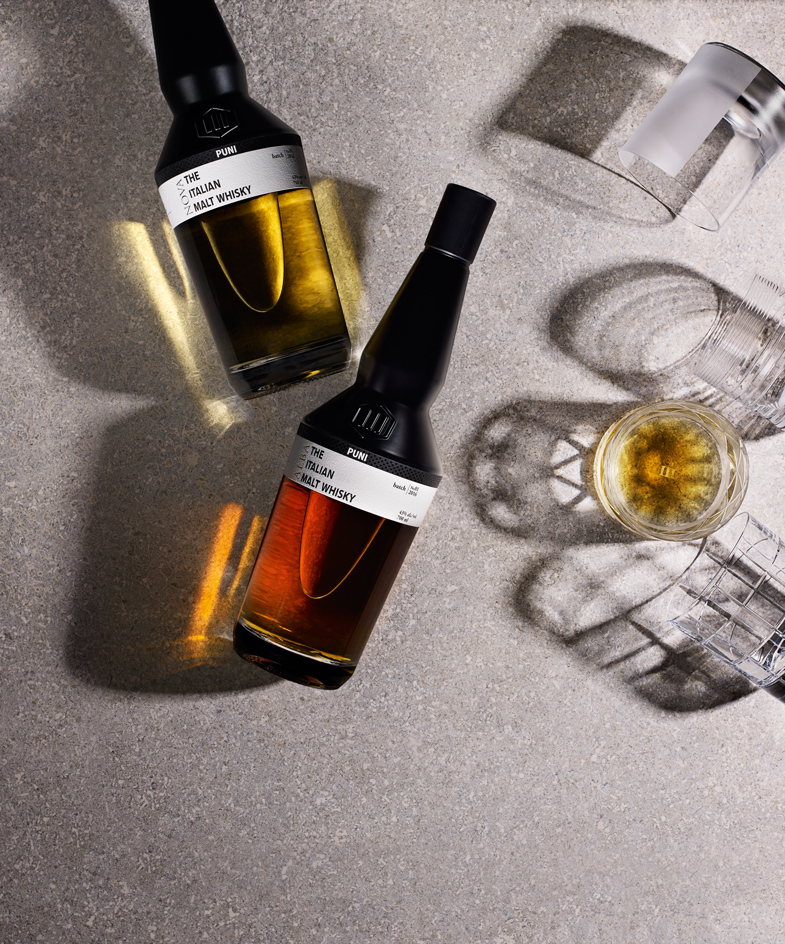
Pictured clockwise from left: Puni Nova from €59; Puni Alba, from €74, both by Puni. ‘Elements’ Tumblers, from £125, by Scholtens & Baijings, for J Hill’s Standard. ‘Cili’ Tumbler, £33, by Mario Cioni, from Harlequin. ‘New Montpellier’ limestone, £99 per sq m, by Lapicida
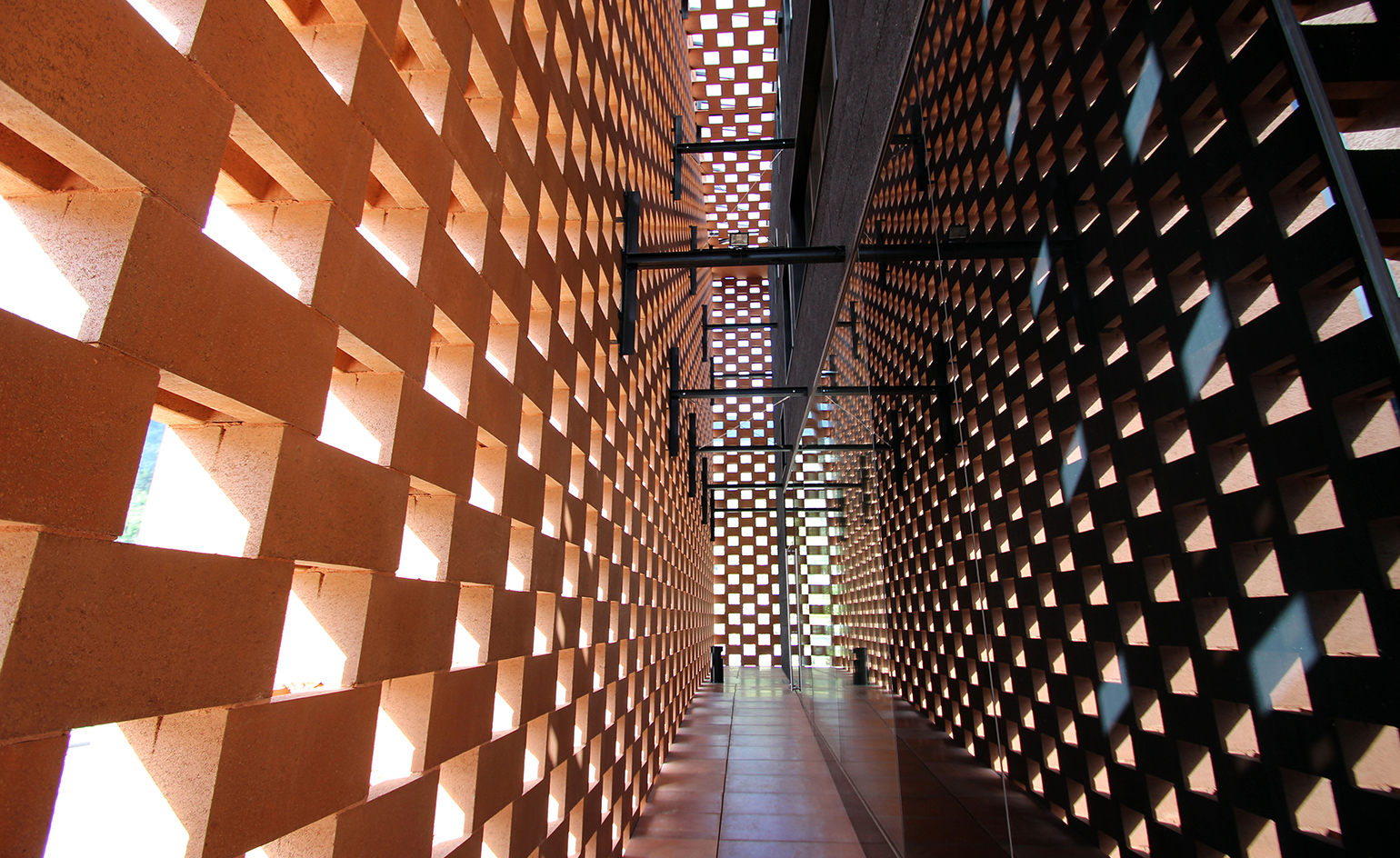
Designed by Werner Tscholl, the Puni distillery features a brick-patterned façade based on local barns

Puni’s pot stills were made by Forsyths in Rothes, Scotland
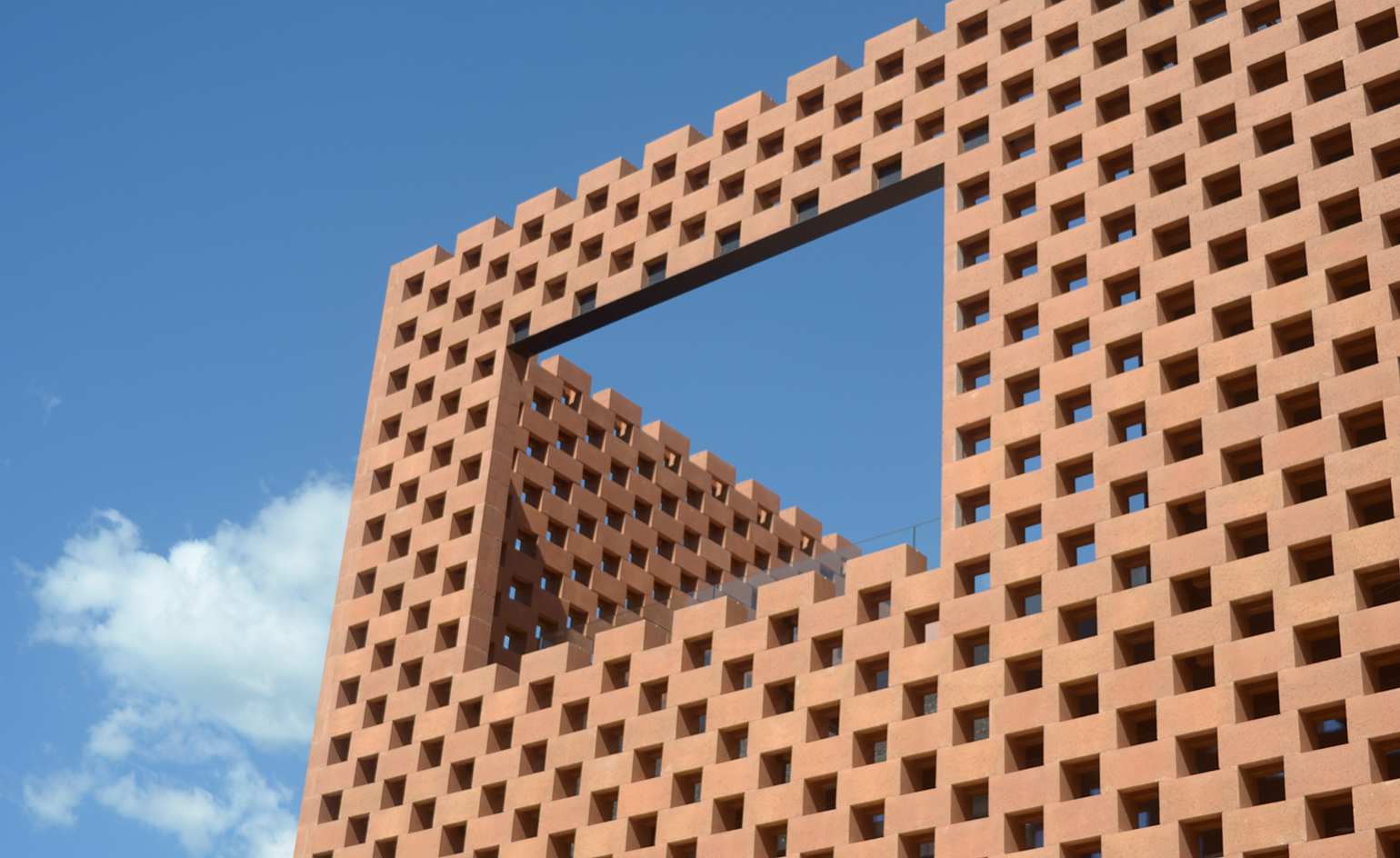
Ebensperger explains that, ‘It was always important that the design of our products reflect the care that we put into creating them’
INFORMATION
For more information, visit the Puni website
Photography: John Short
Receive our daily digest of inspiration, escapism and design stories from around the world direct to your inbox.
Rosa Bertoli was born in Udine, Italy, and now lives in London. Since 2014, she has been the Design Editor of Wallpaper*, where she oversees design content for the print and online editions, as well as special editorial projects. Through her role at Wallpaper*, she has written extensively about all areas of design. Rosa has been speaker and moderator for various design talks and conferences including London Craft Week, Maison & Objet, The Italian Cultural Institute (London), Clippings, Zaha Hadid Design, Kartell and Frieze Art Fair. Rosa has been on judging panels for the Chart Architecture Award, the Dutch Design Awards and the DesignGuild Marks. She has written for numerous English and Italian language publications, and worked as a content and communication consultant for fashion and design brands.
-
 Martell’s high-tech new cognac bottle design takes cues from Swiss watch-making and high-end electronics
Martell’s high-tech new cognac bottle design takes cues from Swiss watch-making and high-end electronicsUnconventional inspirations for a heritage cognac, perhaps, but Martell is looking to the future with its sharp-edged, feather-light, crystal-clear new design
-
 In 2025, fashion retail had a renaissance. Here’s our favourite store designs of the year
In 2025, fashion retail had a renaissance. Here’s our favourite store designs of the year2025 was the year that fashion stores ceased to be just about fashion. Through a series of meticulously designed – and innovative – boutiques, brands invited customers to immerse themselves in their aesthetic worlds. Here are some of the best
-
 The Wallpaper* team’s travel highlights of the year
The Wallpaper* team’s travel highlights of the yearA year of travel distilled. Discover the destinations that inspired our editors on and off assignment
-
 How to build a home wine cellar
How to build a home wine cellarOur resident drinks writer takes us through his own experiences on building the dream wine cellar at home including his favourite wines to stock up on now
-
 Inside Domaine Evremond, the UK’s first subterranean winery
Inside Domaine Evremond, the UK’s first subterranean winery‘Sparkling wine should be fun.’ We tour Domaine Evremond in Kent, a winery steeped in the English countryside
-
 'Moroseta Kitchen' is a new recipe book offering a glimpse into the Puglian countryside
'Moroseta Kitchen' is a new recipe book offering a glimpse into the Puglian countryside'Moroseta Kitchen - A Window Into The Puglian Countryside' by Giorgia Eugenia Goggi is based on the essence of eating in Italy, rooted in farm to table seasonal recipes
-
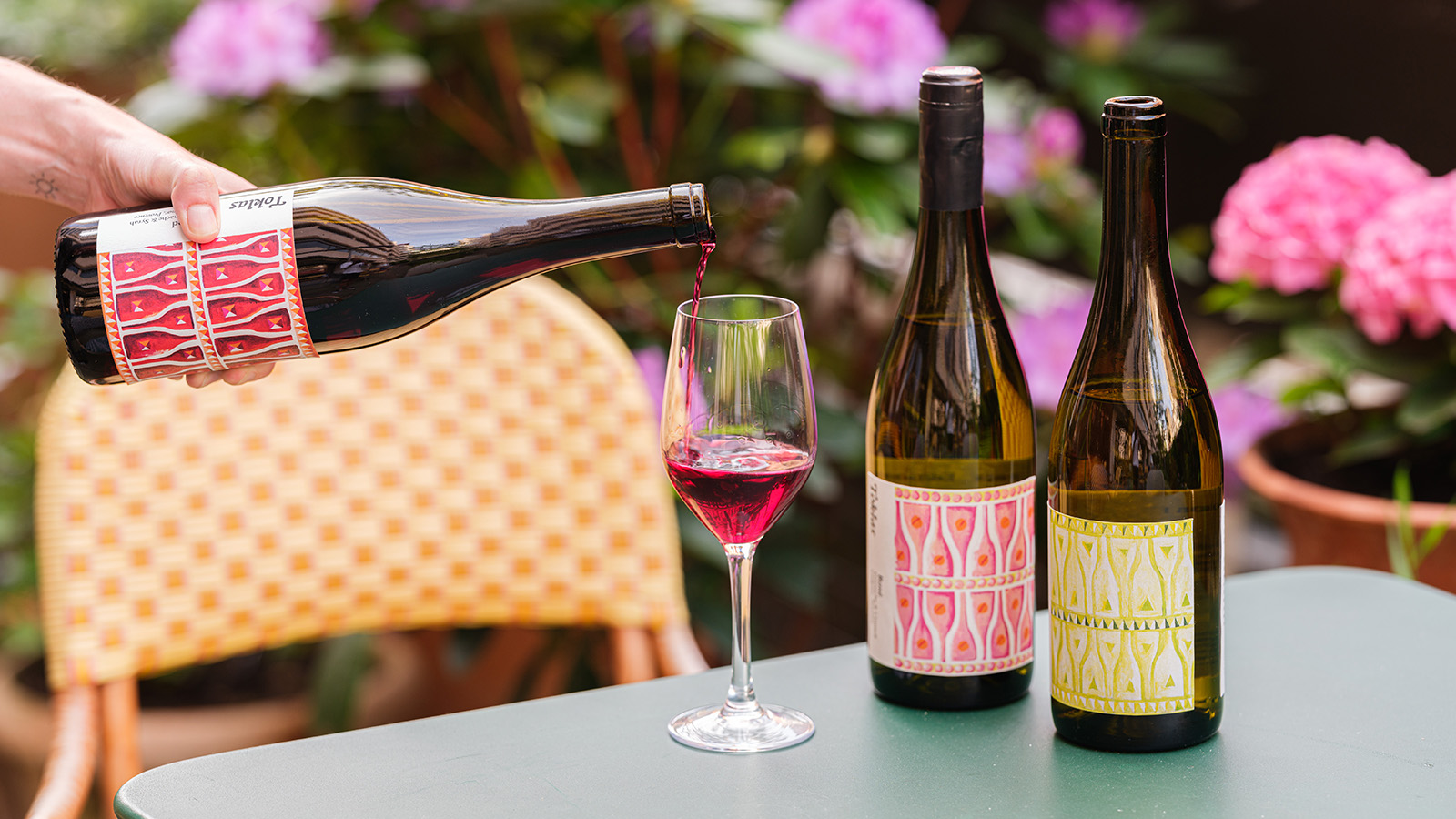 Toklas’ own-label wine is a synergy of art, taste and ‘elevated simplicity’
Toklas’ own-label wine is a synergy of art, taste and ‘elevated simplicity’Toklas, a London restaurant and bakery, have added another string to its bow ( and menu) with a trio of cuvées with limited-edition designs
-
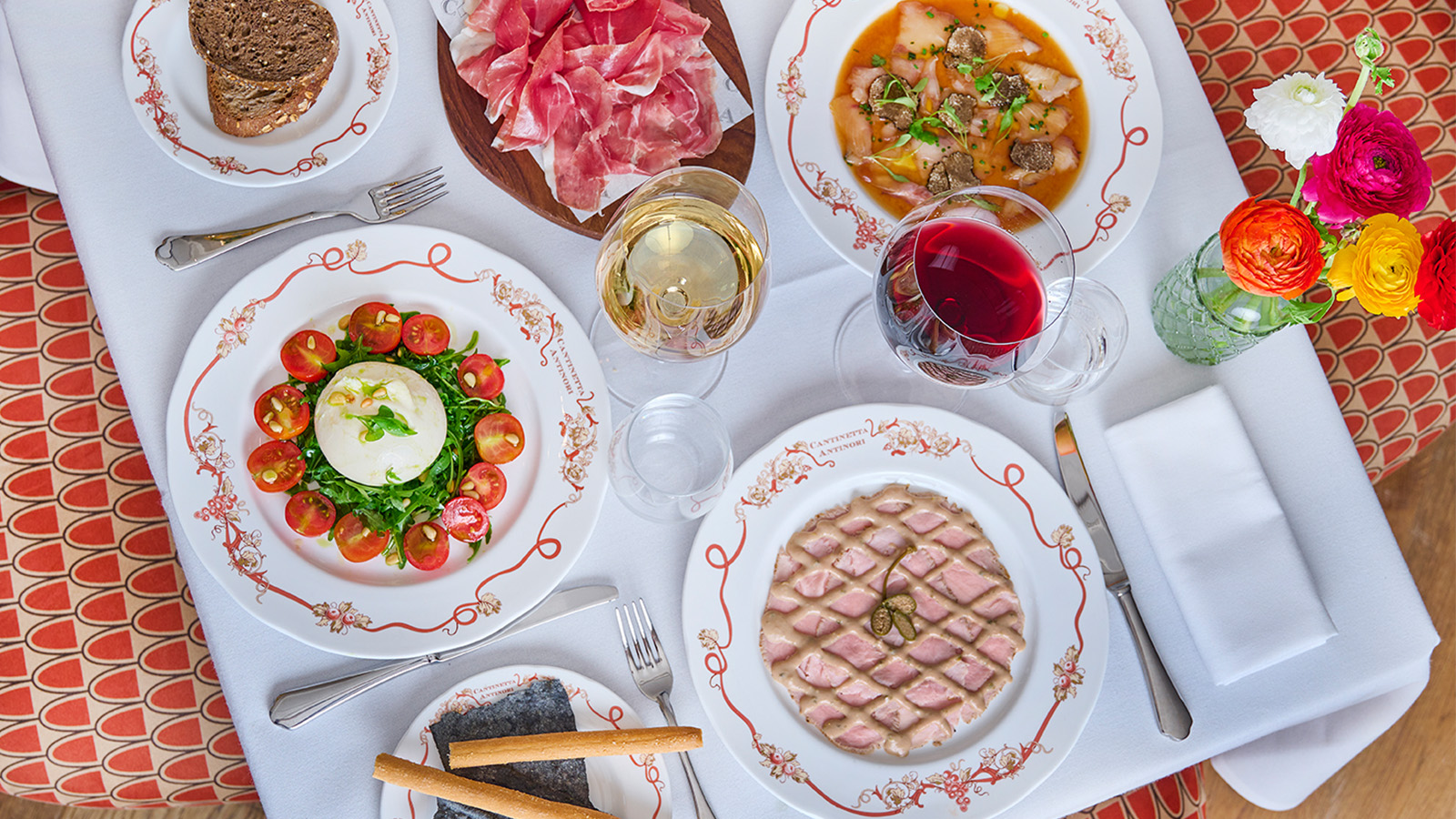 Cantinetta Antinori is a Florentine wine-making family’s new gem of a London restaurant
Cantinetta Antinori is a Florentine wine-making family’s new gem of a London restaurantCantinetta Antinori opens in Knightsbridge, offering excellent Tuscan cuisine paired with the family’s storied wine
-
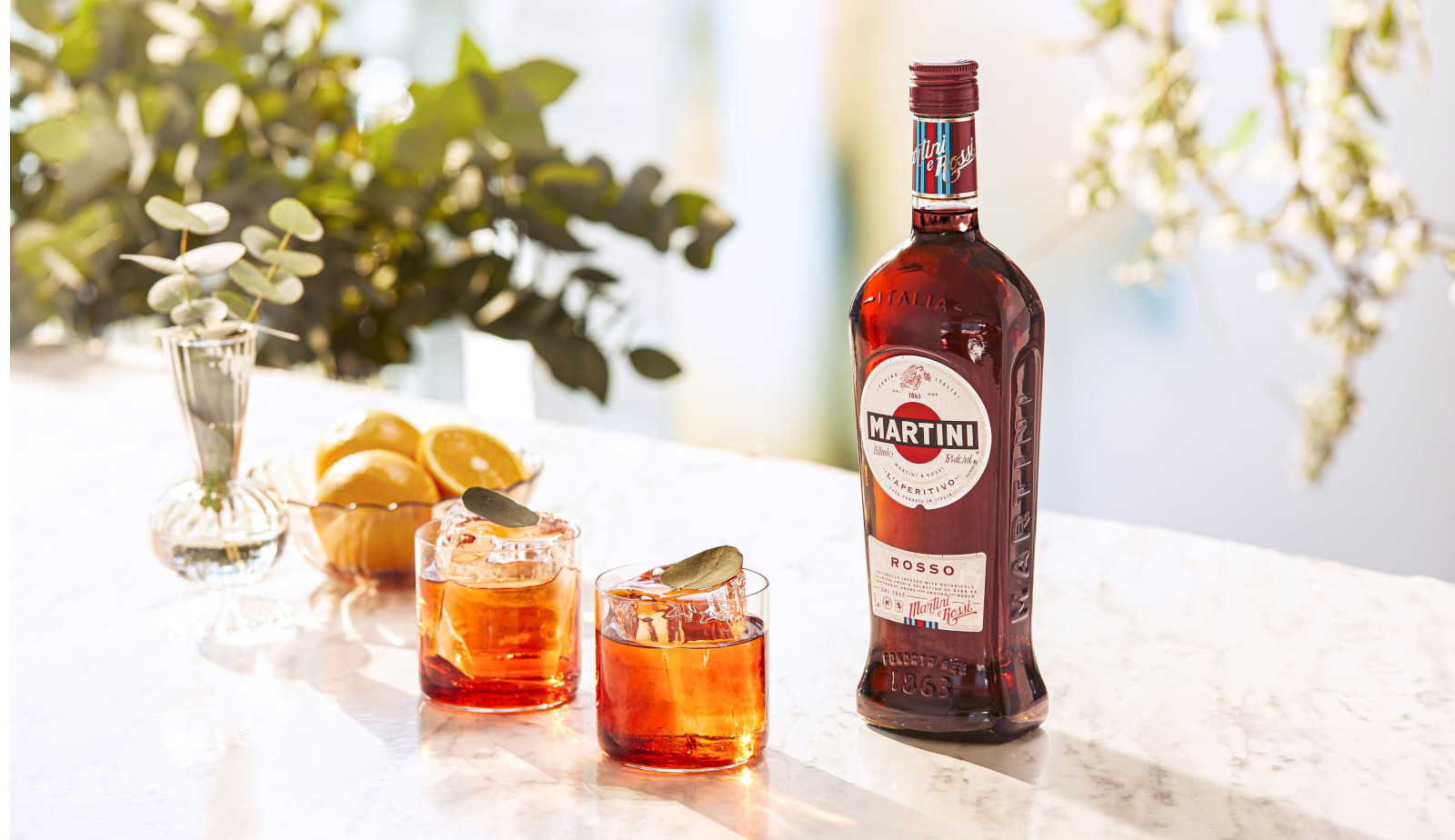 Celebrate 160 years of Martini, the iconic aperitivo
Celebrate 160 years of Martini, the iconic aperitivoWe mark 160 years of Martini & Rossi, creator of the original Martini Rosso vermouth, a perfect blend of fragrant botanicals and sweet wines
-
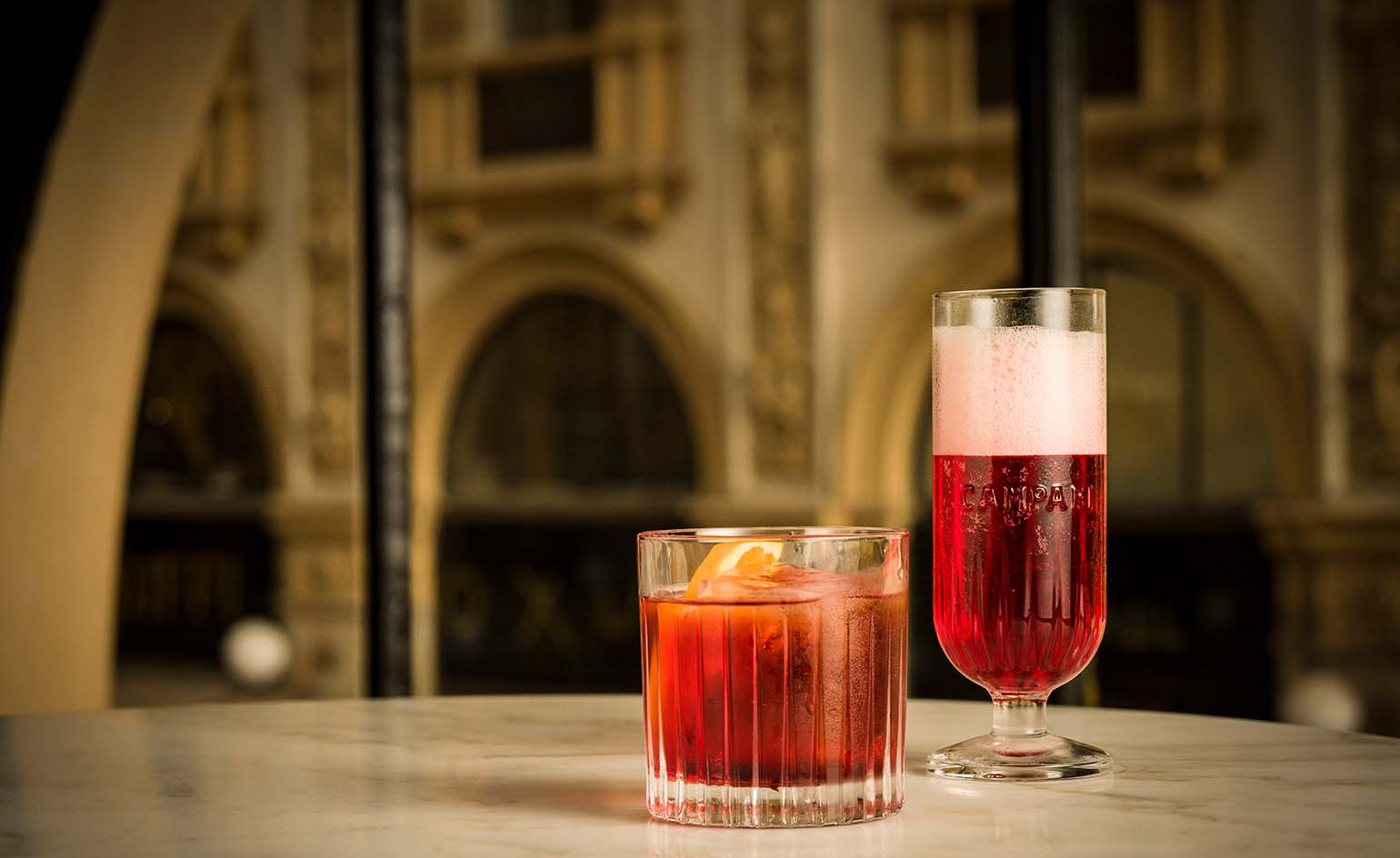 Cin cin: discover the story behind Campari, Milan’s signature aperitivo
Cin cin: discover the story behind Campari, Milan’s signature aperitivoWhere better to indulge in the delights of the Italian golden hour than Milan, the home of Campari? We trace the origins of the city’s signature aperitivo
-
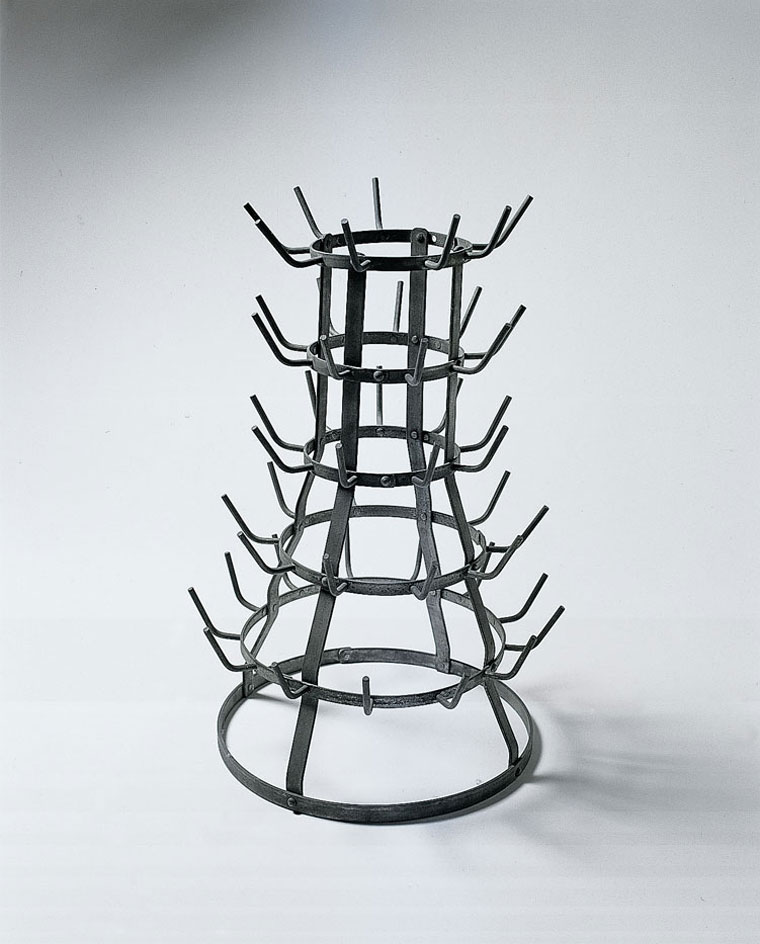 Milan’s Triennale Design Museum spills the beans on the art of food (and food of art)
Milan’s Triennale Design Museum spills the beans on the art of food (and food of art)